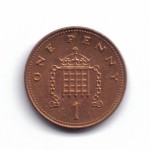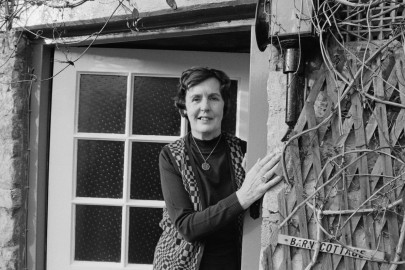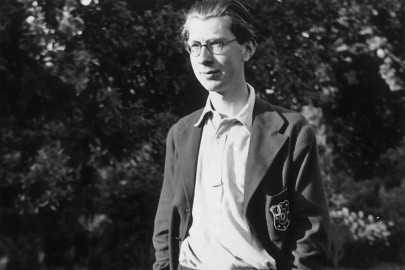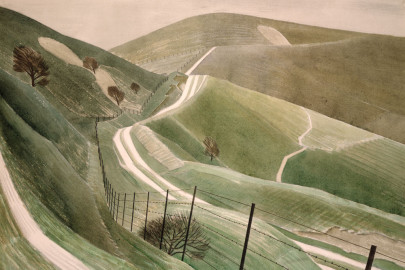Since we’re discussing Diary of a Nobody and Three Men in a Boat, it would be remiss not to give a nod to another classic of English comedy, WC Sellar and RJ Yeatman’s 1066 and All That, available for a penny here.
Written in 1930, it’s the best, well, the funniest book of British history ever written. Taking as its maxim ‘History is what you can remember’, it tells the story of Britain as if narrated by a tipsy man distantly recalling the history lessons he snoozed through as a boy.
There are only two dates in history: 55BC, when the Romans came; and 1066, when the Normans did; and everything is either a Good Thing or a Bad Thing.
I remember this passage on ‘the Pretenders’ making me weep with laughter when I was a schoolboy:
English history has always been subject to Waves of Pretenders. These have usually come in small waves of about two: an Old Pretender and a Young Pretender, their object being to sow dissension in the realm, and if possible to confuse the Royal issue by pretending to be heirs to the throne.
Two pretenders who now arose were Lambert Simnel and Perkin Warbeck, and they succeeded in confusing the issue absolutely by being so similar that some historians suggest they were really the same person [i.e. the Earl of Warbeck].
Lambert Simnel (the Young Pretender) was really (probably) himself, but cleverly pretended to be the Earl of Warbeck. Henry VII therefore ordered him to be led through the streets of London to prove that he really was.
Perkin Warbeck (the Older and more confusing Pretender) insisted that he was himself, thus causing complete dissension till Henry VII had him led through the streets of London to prove that he was really Lambert Simnel.
The punishment of these memorable Pretenders was justly similar, since Perkin Warmnel was compelled to become a blot on the King’s kitchen, while Perbeck was made an escullion.
Wimneck however, subsequently began pretending again. This time he pretended that he had been smothered in early youth and buried under a stair-rod while pretending to be one of the Little Princes in the Tower. In order to prove that he had not been murdered before, Henry was reluctantly compelled to have him executed.
Even after his execution many people believed that he was only pretending to have been beheaded, while others declared that it was not Warmneck at all but Lamkin, and that Permnel had been dead all the time really, like Queen Anne.
It’s a sad thought that most of today’s children wouldn’t get any of that, since as far as I can tell history is now exclusively limited to the abolition of slavery and the rise of the Nazis.
But here’s a good passage for any American readers:
The Boston Tea Party
One day when George III was insane he heard that the Americans never had afternoon tea. This made him very obstinate and he invited them all to a compulsory tea-party at Boston; the Americans, however, started by pouring the tea into Boston Harbour and went on pouring things into Boston Harbour until they were quite Independent, thus causing the United States.
These were also partly caused by Dick Washington who defeated the English at Bunker’s Hill (‘with his little mashie’, as he told his father afterwards).
The War with the Americans is memorable as being the only war in which the English were ever defeated, and it was unfair because the Americans had ‘the Allies’ on their side.
In some ways the war was really a draw because the English remained Top Nation and had the Allies afterwards, while the Americans, in memory of George III’s madness, still refuse to drink tea and go on pouring anything the English send them to drink into Boston Harbour.
After this the Americans made Wittington President and gave up speaking English and became U.S.A. and Columbia and 100%, etc. This was a Good Thing in the end, as it was a cause of the British Empire, but it prevented America from having any more History.
The book finishes at the end of WWI, and describes as ‘a Bad Thing’ the time when “America became Top Nation, and history came to a .” (i.e. history came to a full stop – thus preempting Fukuyama by six decades)












‘Kids’ today also do the Vikings I think.
Black History Month will soon be upon us…
My son’s primary school had their Black History celebration last month. It was a carnival procession by each class accompanied by some very loud ska. The costume themes seemed pretty freestyle – my son went as an explorer. However, his outfit wasn’t inspired by those Victorian missionary-explorers who sought to suppress the slave trade. He just fancied wearing his safari hat.
As it happens, it was very good fun. And the message – which could be summarised as ‘be nice to each other and get on despite any differences’ – seemed wholly reasonable. Needless to say, it was all very different from how we did things at my last primary. But then being of Welsh extraction was enough to make me the school’s only immigrant!
amazing the level of prior factual knowledge expected of the young readers of yesteryear. Are there such things as ‘facts’ anymore? Or are there just ‘feelings’?
I understand why it would be somewhere between churlish and racist to object to Black History Day, or perhaps even Black History Week, but Black History Month? Perhaps moderate traditionalists and progressives could hold a workshop and settle on Black History Fortnight.
Children at primary school nowadays learn much more about history than I did (including facts!) – as far as I remember anyway.
Here are the current requirements regarding ‘Breadth of Study’ Key Stage 2 History (for 7-11 year olds – but they start on history at five year’s old as part of Key Stage 1):
Local history study
7. A study investigating how an aspect in the local area has changed over a long period of time, or how the locality was affected by a significant national or local event or development or by the work of a significant individual.
British history
8. In their study of British history, pupils should be taught about:
the Romans, Anglo-Saxons and Vikings; Britain and the wider world in Tudor times; and either Victorian Britain or Britain since 1930
aspects of the histories of England, Ireland, Scotland and Wales, where appropriate, and about the history of Britain in its European and wider world context, in these periods.
Romans, Anglo-Saxons and Vikings in Britain
9. An overview study of how British society was shaped by the movement and settlement of different peoples in the period before the Norman Conquest and an in-depth study of how British society was affected by Roman or Anglo-Saxon or Viking settlement.
Britain and the wider world in Tudor times
10. A study of some significant events and individuals, including Tudor monarchs, who shaped this period and of the everyday lives of men, women and children from different sections of society.
Victorian Britain or Britain since 1930
11. Teachers can choose between a study of Victorian Britain or Britain since 1930.
Victorian Britain
A study of the impact of significant individuals, events and changes in work and transport on the lives of men, women and children from different sections of society.
Britain since 1930
A study of the impact of the Second World War or social and technological changes that have taken place since 1930, on the lives of men, women and children from different sections of society.
A European history study
12. A study of the way of life, beliefs and achievements of the people living in Ancient Greece and the influence of their civilisation on the world today.
A world history study
13. A study of the key features, including the everyday lives of men, women and children, of a past society selected from: Ancient Egypt, Ancient Sumer, the Assyrian Empire, the Indus Valley, the Maya, Benin, or the Aztecs.
My primary school was well-thought of and I was taught mostly by men wearing ties and tweed jackets. However, I don’t recall learning all this.
Oh yes, they have to know it in the right order too!
Chronological understanding
1. Pupils should be taught to:
– place events, people and changes into correct periods of time
– use dates and vocabulary relating to the passing of time, including ancient, modern, BC, AD, century and decade.
I think there are probably better ways of getting across the message about being nice to each other regardless of ethnic origin. I’d start by not dividing up the class by colour.
G – I remember we spent an awful lot of time on medieval ‘strip farming’ (much less exciting than it sounds).
ooh yes strip farming and enclosures, thats what the 8 year old me was getting bored to death with
With respect, Gaw, I’d be a little careful about taking that curriculum too seriously. It’s a progressive educator’s dream, and of course they will assure parents and conservative investigative reporters that “facts” are important. In the hands of a dull teacher, that might end up being a one-day exercise in making a collective pictoral timeline between Hadrian and Tony Blair, and then going back to the important subject of the everyday lives of ordinary people in Ancient Sumer. (“Tomorrow, we’re all going to bring in a typical Sumerian dish and have a Sumerian picnic! Now, who wants to bring the maize?”).
Look at the blurb on Britain since 1930 and ask yourself how much 7-11 year olds could really absorb about “social and technological changes that have taken place since 1930” , and how mind-numbingly boring it would be for them to try. All they could do would be to regurgitate the teacher’s prattle about the welfare state and climate change. Better, I suggest, to thrill and scare them with tales of how the British showed Jerry cold steel at El Alamein.
I did strip farming (as you say, nothing like strip poker) at secondary school. I felt sorry for those medieval peasants as that form of agriculture seemed terribly boring (sorry Recusant).
I can’t say I feel that strongly about Black History, etc. It seems a bit out of place in my son’s school which contains significant minorities of about every conceivable colour and provenance. Why single out black people? the children must think. But then the school seems to have adapted by making it in large part a ‘celebration of diversity’ (I can’t write that without quotation marks!). From what I saw it didn’t seem at all divisive.
Peter, our posts crossed. I shall let you know what level of subversion is experienced.
I was interested to note how the curriculum combines a ‘great men’ approach – re-labelled as ‘significant individuals’ – with a social history that could be recounted ‘from below’. This is a sensible mix if both parts are given their head.
Anyway, frequent home screenings of Zulu, etc. should help adjust any imbalance.